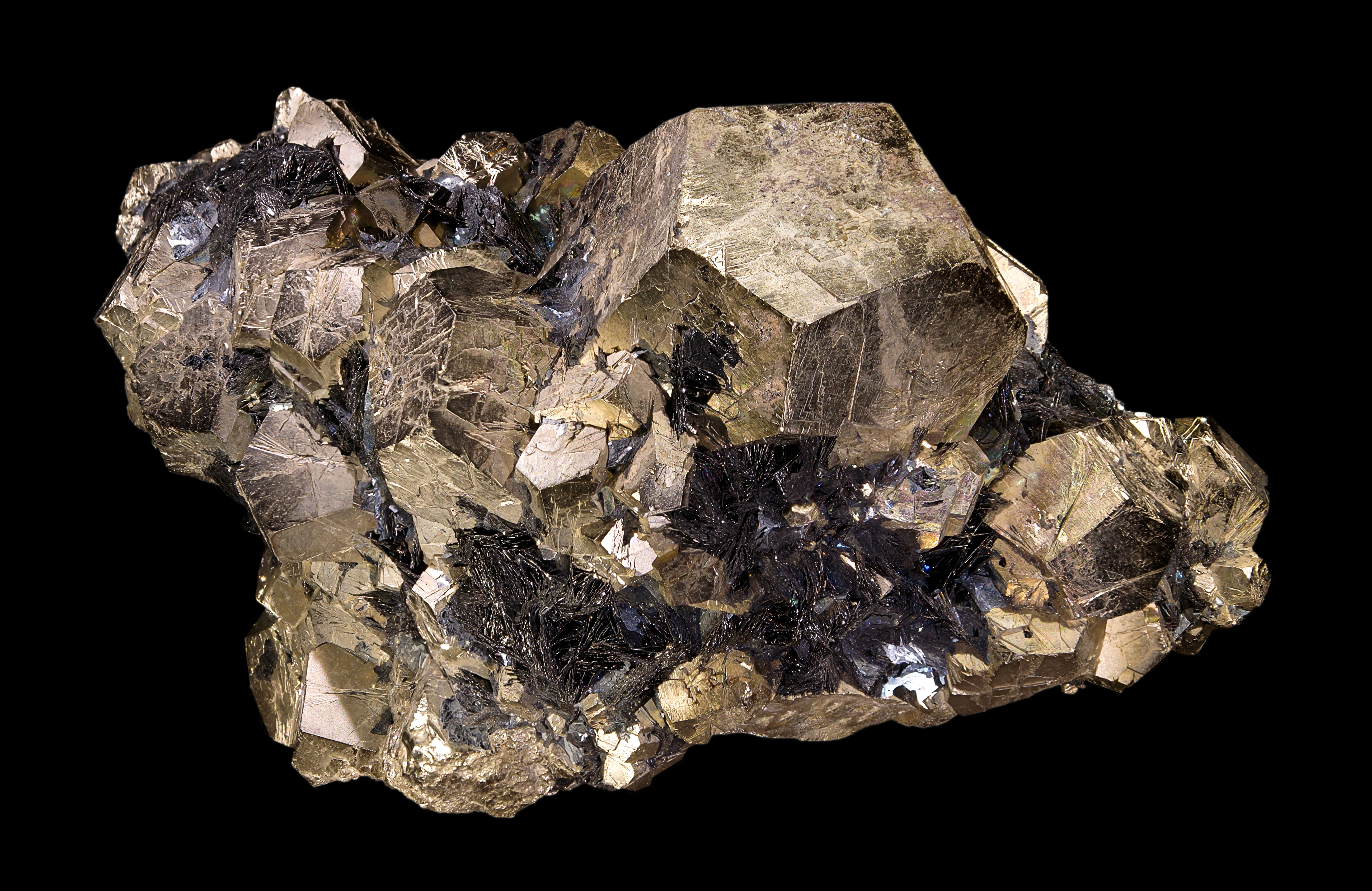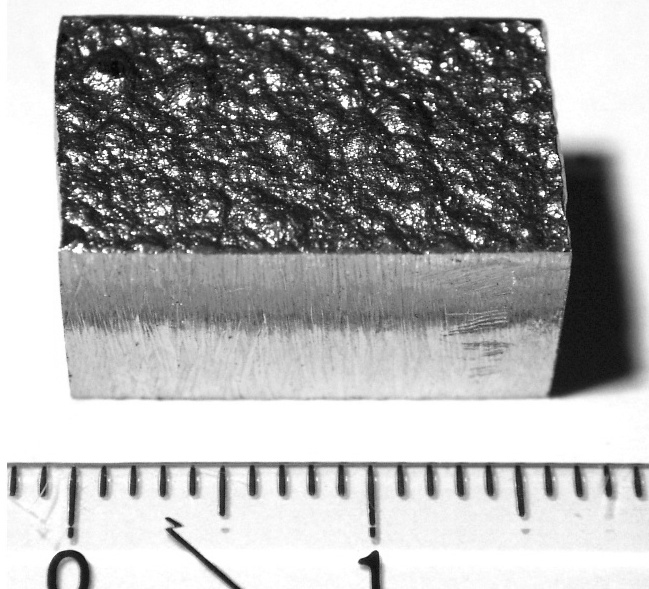|
Cobaltite
Cobaltite is an arsenide and sulfide mineral with the mineral formula Co As S. It is the naming mineral of the cobaltite group of minerals, whose members structurally resemble pyrite (FeS2). History Cobaltite was first described in 1797 by Klaproth.Page ''Cobaltite: Mineral information, data and localities'' on Its name stems from the contained element cobalt, whose name is attributed to the German term ''Kobold'', referring to an "underground spirit" or "goblin". The notion of "bewitched" minerals stems from cobaltite and other cobalt ores withstanding the smelting methods of the medieval period, often producing foul-smelling, poisonous fumes in the process. Properties Cobaltite naturally appears in the form of a tetartoid, a form of dodecahedron with chiral tetrahedral symmetry. Its impurities may contain up to 10% iron and variable amounts of nickel.Klein, Cornelus and Cornrlius Hurlbut, 1996, ''Manual of Mineralogy'', 20th ed., Wiley, p.288, Cobaltite can be separa ... [...More Info...] [...Related Items...] OR: [Wikipedia] [Google] [Baidu] |
Sulfide Mineral
The sulfide minerals are a class of minerals containing sulfide (S2−) or disulfide () as the major anion. Some sulfide minerals are economically important as metal ores. The sulfide class also includes the selenide mineral, selenides, the telluride mineral, tellurides, the arsenide mineral, arsenides, the antimonide mineral, antimonides, the bismuthinides, the sulfarsenides and the sulfosalts.http://www.minerals.net/mineral/sort-met.hod/group/sulfgrp.htm Minerals.net Dana Classification, SulfidesKlein, Cornelis and Cornelius S. Hurlbut, Jr., 1986, ''Manual of Mineralogy'', Wiley, 20th ed., pp 269-293 Sulfide minerals are inorganic compounds. Minerals Common or important examples include: * Acanthite *Chalcocite *Bornite *Galena *Sphalerite *Chalcopyrite *Pyrrhotite *Millerite *Pentlandite *Covellite *Cinnabar *Realgar *Orpiment *Stibnite *Pyrite *Marcasite *Molybdenite Sulfarsenides: *Cobaltite *Arsenopyrite *Gersdorffite Sulfosalts: *Pyrargyrite *Pro ... [...More Info...] [...Related Items...] OR: [Wikipedia] [Google] [Baidu] |
Tetartoid
In geometry, a dodecahedron (; ) or duodecahedron is any polyhedron with twelve flat faces. The most familiar dodecahedron is the regular dodecahedron with regular pentagons as faces, which is a Platonic solid. There are also three regular star dodecahedra, which are constructed as stellations of the convex form. All of these have icosahedral symmetry, order 120. Some dodecahedra have the same combinatorial structure as the regular dodecahedron (in terms of the graph formed by its vertices and edges), but their pentagonal faces are not regular: The pyritohedron, a common crystal form in pyrite, has pyritohedral symmetry, while the tetartoid has tetrahedral symmetry. The rhombic dodecahedron can be seen as a limiting case of the pyritohedron, and it has octahedral symmetry. The elongated dodecahedron and trapezo-rhombic dodecahedron variations, along with the rhombic dodecahedra, are space-filling. There are numerous other dodecahedra. While the regular dodecahed ... [...More Info...] [...Related Items...] OR: [Wikipedia] [Google] [Baidu] |
Cobalt
Cobalt is a chemical element; it has Symbol (chemistry), symbol Co and atomic number 27. As with nickel, cobalt is found in the Earth's crust only in a chemically combined form, save for small deposits found in alloys of natural meteoric iron. The free element, produced by reductive smelting, is a hard, lustrous, somewhat brittle, gray metal. Cobalt-based blue pigments (cobalt blue) have been used since antiquity for jewelry and paints, and to impart a distinctive blue tint to glass. The color was long thought to be due to the metal bismuth. Miners had long used the name ''kobold ore'' (German language, German for ''goblin ore'') for some of the blue pigment-producing minerals. They were so named because they were poor in known metals and gave off poisonous arsenic-containing fumes when smelted. In 1735, such ores were found to be reducible to a new metal (the first discovered since ancient times), which was ultimately named for the ''kobold''. Today, some cobalt is produced sp ... [...More Info...] [...Related Items...] OR: [Wikipedia] [Google] [Baidu] |
Magnetite
Magnetite is a mineral and one of the main iron ores, with the chemical formula . It is one of the iron oxide, oxides of iron, and is ferrimagnetism, ferrimagnetic; it is attracted to a magnet and can be magnetization, magnetized to become a permanent magnet itself. With the exception of extremely rare native iron deposits, it is the most magnetic of all the naturally occurring minerals on Earth. Naturally magnetized pieces of magnetite, called lodestone, will attract small pieces of iron, which is how ancient peoples first discovered the property of magnetism. Magnetite is black or brownish-black with a metallic luster, has a Mohs scale of mineral hardness, Mohs hardness of 5–6 and leaves a black streak (mineralogy), streak. Small grains of magnetite are very common in igneous rocks, igneous and metamorphic rocks. The chemical IUPAC name is iron(II,III) oxide and the common chemical name is ''ferrous-ferric oxide''. Properties In addition to igneous rocks, magnetite als ... [...More Info...] [...Related Items...] OR: [Wikipedia] [Google] [Baidu] |
Sphalerite
Sphalerite is a sulfide mineral with the chemical formula . It is the most important ore of zinc. Sphalerite is found in a variety of deposit types, but it is primarily in Sedimentary exhalative deposits, sedimentary exhalative, Carbonate-hosted lead-zinc ore deposits, Mississippi-Valley type, and Volcanogenic massive sulfide ore deposit, volcanogenic massive sulfide deposits. It is found in association with galena, chalcopyrite, pyrite (and other sulfide mineral, sulfides), calcite, dolomite (mineral), dolomite, quartz, rhodochrosite, and fluorite. German geologist Ernst Friedrich Glocker discovered sphalerite in 1847, naming it based on the Greek word ''sphaleros'', meaning "deceiving", due to the difficulty of identifying the mineral. In addition to zinc, sphalerite is an ore of cadmium, gallium, germanium, and indium. Miners have been known to refer to sphalerite as ''zinc blende'', ''black-jack'', and ''ruby blende''. Marmatite is an opaque black variety with a high iron ... [...More Info...] [...Related Items...] OR: [Wikipedia] [Google] [Baidu] |
Chalcopyrite
Chalcopyrite ( ) is a copper iron sulfide mineral and the most abundant copper ore mineral. It has the chemical formula CuFeS2 and crystallizes in the tetragonal system. It has a brassy to golden yellow color and a Mohs scale, hardness of 3.5 to 4 on the Mohs scale. Its Streak (mineralogy), streak is diagnostic as green-tinged black. On exposure to air, chalcopyrite tarnishes to a variety of oxides, hydroxides, and sulfates. Associated copper minerals include the sulfides bornite (Cu5FeS4), chalcocite (Cu2S), covellite (CuS), digenite (Cu9S5); carbonates such as malachite and azurite, and rarely oxides such as cuprite (Cu2O). It is rarely found in association with native copper. Chalcopyrite is a conductor of electricity. Copper can be extracted from chalcopyrite ore using various methods. The two predominant methods are pyrometallurgy and hydrometallurgy, the former being the most commercially viable. Etymology The name chalcopyrite comes from the Greek words , which means cop ... [...More Info...] [...Related Items...] OR: [Wikipedia] [Google] [Baidu] |
Skutterudite
Skutterudite is a cobalt arsenide mineral containing variable amounts of nickel and iron substituting for cobalt with the ideal formula CoAs3. Some references give the arsenic a variable formula subscript of 2–3. High nickel varieties are referred to as nickel-skutterudite, previously chloanthite. It is a hydrothermal ore mineral found in moderate to high temperature veins with other Ni-Co minerals. Associated minerals are arsenopyrite, native silver, erythrite, annabergite, nickeline, cobaltite, silver sulfosalts, native bismuth, calcite, siderite, barite and quartz. It is mined as an ore of cobalt and nickel with a by-product of arsenic. The crystal structure of this mineral has been found to be exhibited by several compounds with important technological uses. The mineral has a bright metallic luster, and is tin white or light steel gray in color with a black streak. The specific gravity is 6.5 and the hardness is 5.5–6. Its crystal structure is isometric with ... [...More Info...] [...Related Items...] OR: [Wikipedia] [Google] [Baidu] |
Allanite
Allanite (also called orthite) is a sorosilicate group of minerals within the broader epidote group that contain a significant amount of rare-earth elements. The mineral occurs mainly in metamorphosed clay-rich sediments and felsic igneous rocks. It has the general formula A2M3Si3O12 H where the A sites can contain large cations such as Ca2+, Sr2+, and rare-earth elements, and the M sites admit Al3+, Fe3+, Mn3+, Fe2+, or Mg2+ among others. However, a large amount of additional elements, including Th, U, Be, Zr, P, Ba, Cr and others may be present in the mineral. The International Mineralogical Association lists four minerals in the allanite group, each recognized as a unique mineral: allanite-(Ce), allanite-(La), allanite-(Nd), and allanite-(Y), depending on the dominant rare earth present: cerium, lanthanum, neodymium or yttrium. Allanite contains up to 20% rare-earth elements and is a valuable source of them. The inclusion of thorium and other radioactive elements in allanit ... [...More Info...] [...Related Items...] OR: [Wikipedia] [Google] [Baidu] |
Zoisite
Zoisite, first known as saualpite, after its type locality, is a calcium aluminum hydroxy sorosilicate belonging to the epidote group of minerals. Its chemical formula is Ca2 Al3( Si O4)(Si2O7)O(O H). Zoisite occurs as prismatic, orthorhombic (2/m 2/m 2/m) crystals or in massive form, being found in metamorphic and pegmatitic rock. Zoisite may be blue to violet, green, brown, pink, yellow, gray, or colorless. Blue crystals are known under the name tanzanite. It has a vitreous luster and a conchoidal to uneven fracture. When euhedral, zoisite crystals are striated parallel to the principal axis (c-axis). Also parallel to the principal axis is one direction of perfect cleavage. The mineral is between 6 and 7 on the Mohs hardness scale, and its specific gravity ranges from 3.10 to 3.38, depending on the variety. It streaks white and is said to be brittle. Clinozoisite is a more common monoclinic polymorph of Ca2Al3(SiO4)(Si2O7)O(OH). Transparent material is fashioned ... [...More Info...] [...Related Items...] OR: [Wikipedia] [Google] [Baidu] |
Hydrothermal
Hydrothermal circulation in its most general sense is the circulation of hot water (Ancient Greek ὕδωρ, ''water'',Liddell, H.G. & Scott, R. (1940). ''A Greek-English Lexicon. revised and augmented throughout by Sir Henry Stuart Jones. with the assistance of. Roderick McKenzie.'' Oxford: Clarendon Press. and θέρμη, ''heat'' ). Hydrothermal circulation occurs most often in the vicinity of sources of heat within the Earth's crust. In general, this occurs near volcanic activity, but can occur in the shallow to mid crust along deeply penetrating fault irregularities or in the deep crust related to the intrusion of granite, or as the result of orogeny or metamorphism. Hydrothermal circulation often results in hydrothermal mineral deposits. Seafloor hydrothermal circulation Hydrothermal circulation in the oceans is the passage of the water through mid-oceanic ridge systems. The term includes both the circulation of the well-known, high-temperature vent waters near the ridge c ... [...More Info...] [...Related Items...] OR: [Wikipedia] [Google] [Baidu] |
Scapolite
The scapolites (, "rod", and , "stone") are a group of rock-forming silicate minerals composed of aluminium, calcium, and sodium silicate with chlorine, carbonate and sulfate. The two endmembers are meionite () and marialite (). Silvialite is also a recognized member of the group. Properties The group is an isomorphous mixture of the meionite and marialite endmembers. The tetragonal crystals are hemihedral with parallel faces (like scheelite), and at times of considerable size. They are distinct and usually have the form of square columns, some cleavages parallel to the prism-faces. Crystals are usually white or greyish-white and opaque, though meionite is found as colorless glassy crystals in the ejected limestone blocks of Monte Somma, Vesuvius. The hardness is 5–6, and the specific gravity varies with the chemical composition between 2.7 (meionite) and 2.5 (marialite). The scapolites are especially liable to alteration by weathering processes, with the developmen ... [...More Info...] [...Related Items...] OR: [Wikipedia] [Google] [Baidu] |








